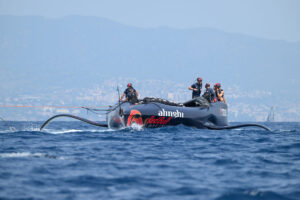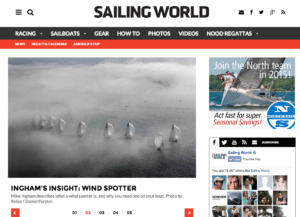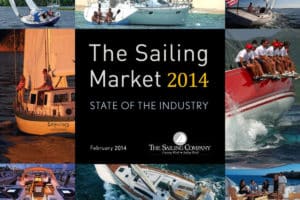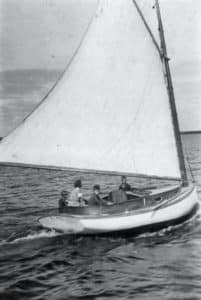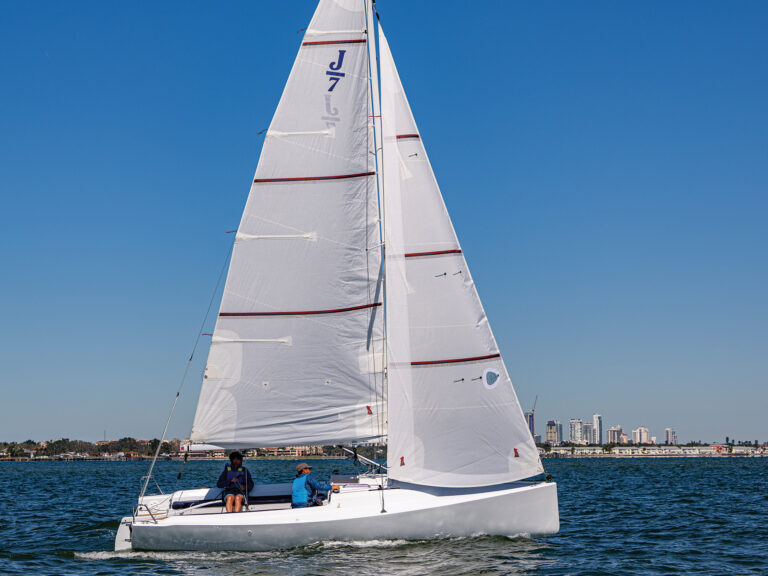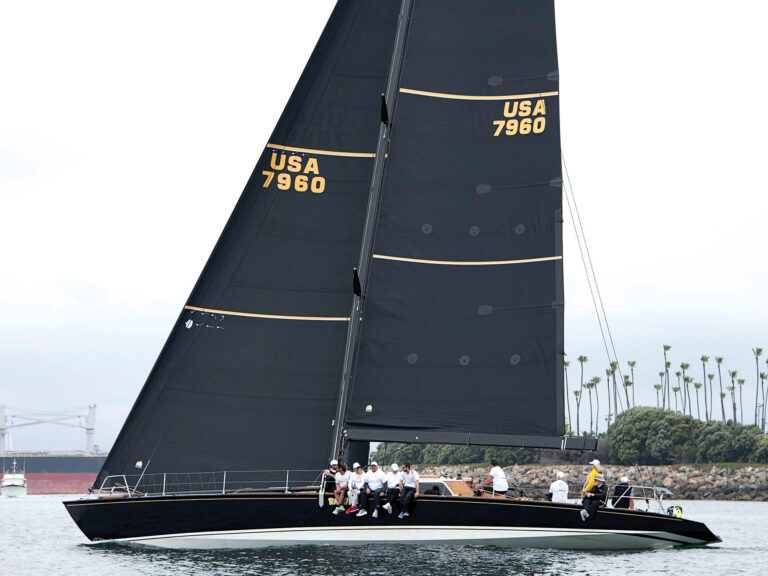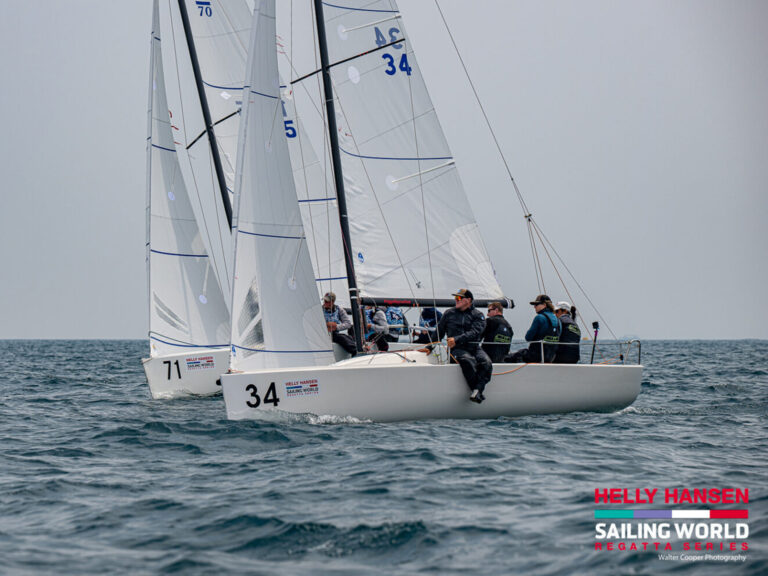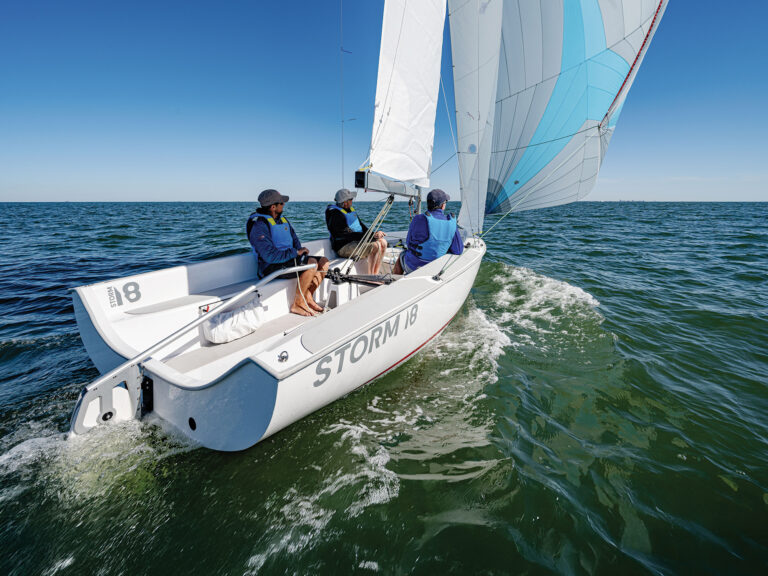
herbhobart 368
It’s been a weird spring down here in Sydney, Australia. If you don’t believe me, ask the folks in the southern “alps” of Thredbo, New South Wales. A few days ago, a massive low wound its way up and across the Southern Ocean from Antarctica and pasted the ski resort with a highly unseasonable foot of snow before descending on Sydney and submerging the city under a cold, harsh deluge. Board sports are a way of life Down Under, but this time of year you’re supposed to be thinking surfboards, not snowboards.
With summer, such as it is, squarely on the horizon, there’s something else unusual happening in Sydney right now. The annual 635-mile Rolex Sydney-Hobart Race is just weeks away– it starts on Boxing Day, the day after Christmas– and the entry list numbers 108 yachts, over two dozen more boats than set off on the event in 2007. At a time when entry lists for major races everywhere seem to be tanking as a consequence of the free-falling global economy, the Sydney-Hobart classic is enjoying its second biggest fleet since 1998, when a “weather bomb” went off in the Bass Strait, about a third of the way down the track, sinking five boats and killing six sailors. Scores of others were rescued at sea in the worst ocean-racing disaster since the infamous edition of the Fastnet in 1979.
Now, on the 10th anniversary of that deadly episode, and in the midst of these strange, strange days, the race appears healthier than ever. The obvious question: Why?
“It’s a good question and a lot of people have been asking it,” said Matt Allen, who skippers the modified Volvo 70 Ichi Ban and serves as commodore of the event’s organizers, the Cruising Yacht Club of Australia (CYCA). “A lot of people have been planning to do it for a while so the downturn in the economy didn’t affect them. Plus, the race just continues to grow in stature, so I think that has an impact. When you travel the world– it doesn’t matter if you’re in Europe or North America– everyone says, ‘Gee, I’d love to do a Hobart Race one day.’ And some people actually do it. They just don’t talk about it.
“It’s just such an iconic Australian event,” he continued. “It attracts so much interest.”
In the aftermath of the horrific ’98 event– and the inquests, legal proceedings, and general soul-searching that accompanied it– much of that interest was decidedly negative. The race went through some lean years, but it’s prospering once again. Allen cites several major changes, all for the better, that came about as a direct result of the tragic running.
First, he said, the entire administrative structure has been overhauled, with separate, dedicated teams concentrating on race management and emergency response. Next, there’s been increased awareness of safety, in terms of both boat inspections and the gear required aboard, and in mandatory crew training for the sailors themselves. And finally, the passage of time has seen major advancements in weather forecasting, and with it, better odds of keeping sailors out of harm’s way.
These days, before boats proceed into the notorious Bass Strait, skippers must radio the race committee and make a formal pronouncement on their intentions to carry forth.
“That’s one of the long list of changes,” said Allen. “That’s obviously a regulation that’s particular to this race. But it’s a good way to check that everything’s going all right before you get away from the New South Wales coast, where help is more readily available than further south, where the conditions can get pretty nasty. It’s been a terrific idea, actually.”
If there’s one major change in the overall nature of the race, it’s that the smaller boats, in the 35- to 40-foot range, that once constituted a much larger percentage of the fleet, have seen their numbers dwindle. “Economic conditions have been pretty buoyant (in Australia in recent times) and I think people have traded up to bigger boats,” he said.
But there’s more to it than that, he added. “The 1998 race was probably the beginning when people realized they couldn’t sail off with mum and dad and the family for a race to Hobart that was actually a cruise,” he said. “This is a serious ocean race. The majority of your crew better have real, ocean-racing experience. You can’t just string together a group of weekend sailors, not train much, and just head off to Hobart on a poorly prepared boat. People just don’t do that anymore.”
Indeed, when asked which boats he thinks have a good shot at the overall prize– which last year was won by the lone U.S. boat in the field, Roger Sturgeon’s 65-foot Rosebud– Allen rattles off a list of formidable Grand Prix racers, many of them new and several from the board of Reichel/Pugh, including the 62-foot Limit, the 63-foot Loki, and an IRC 40, Chutzpah, which the commodore reckons could be a giant killer if the race is a heavy downwind affair. He also gives high marks to the Cookson 50 Quantum Racing and the Farr 55 Living Doll.
Rosebud, alas, isn’t back to defend her title, and once again there’s but a single stateside entry, but it’s a vintage one with plenty of history. Ragtime, the low, sleek Spencer 65 from Southern California, is fresh off a victory in last summer’s revived Tahiti Race, and among skipper Chris Welsh’s crew is veteran navigator John Jourdane, who knows a thing or two about winning ocean races.
Does the old girl stand a chance? It’ll depend, of course, on the weather.
“It’s tough to pick a handicap favorite until we get closer to the start and see how the weather’s going to evolve,” said Allen. “You never know what you’re going to get on Boxing Day.”
Well, other than one of the top overall Hobart fleets in quite some time. And ten years after the worst Hobart ever, that’s plenty good enough.

